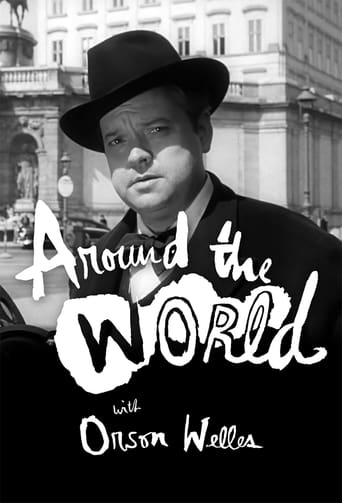

"Around The World With Orson Welles" (broadcast in France under the title: Le Carnet De Voyage d'Orson Welles) is a series of 6 episodes lasting 26 minutes produced by Louis Dolivet for a new British channel, ITV and dedicated to Orson Welles and following "Orson Welles' Sketch Book". The contract signed in March 1955 with ITV called for an order of 26 episodes, each to be a travelogue. This is Welles' first real work for television (the "Sketch Book" series consists of long fixed shots in the studio). The episode filmed first is the one dedicated to Vienna. Two episodes are devoted to the Basque Country, another to bullfighting, then to a district of Paris, Saint-Germain-des-Prés, and finally, the last to retirees from Chelsea (London). The episode dedicated to the Domenici Affair was left partly unfinished, but should have been the first documentary dedicated to this affair which hit the headlines in France in 1952.
 AD
AD
All Prime Video
Cancel anytime


The Dominici affair is a criminal case that occurred in France in the mid-20th century, which gave rise to detailed counter-investigations, emblematic of investigative journalism. On the night of August 4 to 5, 1952, three Englishmen, Sir Jack Drummond, a 61-year-old scientist, his wife Anne Wilbraham, 45, and their 10-year-old daughter, Elizabeth, were murdered near their car near La Grand. 'Terre, the farm of the Dominici family, in the town of Lurs in the Basses-Alpes (current Alpes-de-Haute-Provence). Patriarch Gaston Dominici was accused of the triple murder and sentenced to death in 1954. In 1957, President René Coty commuted the death sentence and on July 14, 1960, General de Gaulle pardoned and released Gaston Dominici. The affair was followed by numerous journalists, both French and foreign.

Orson Welles and Mr. and Mrs. Kenneth Tynan travel to Madrid to explain the nuts and bolts of bullfighting.

Orson Welles travels to London to visit an alms house in Hackney for indigent widows that was created in the 1600s and an old soldiers home in Chelsea.

Orson Welles travels to Paris, France, where his visit to the Saint Germain des Pres neighborhood is chronicled by newspaper columnist Art Buchwald. Welles interviews an artist, poets inventing new letters to describe sounds and night clubs featuring musicians playing hot jazz.

Orson Welles re-visits the city of Vienna, the setting of one of his most famous films, and one of his greatest performances as the unforgettable Harry Lime in Carol Reed's The Third Man.

Orson Welles continues his tour of the Basque region of France and Spain and learns about the game of pelota and some of its variants - jai alai, joko garbi, and rebot.

Orson Welles takes the viewer to the Basque countryside, a remote corner of Europe on the border of Spain and France. He interviews American expatriates and a Basque sheepherder who returned to Europe after spending 23 years in Colorado.
"Around The World With Orson Welles" (broadcast in France under the title: Le Carnet De Voyage d'Orson Welles) is a series of 6 episodes lasting 26 minutes produced by Louis Dolivet for a new British channel, ITV and dedicated to Orson Welles and following "Orson Welles' Sketch Book". The contract signed in March 1955 with ITV called for an order of 26 episodes, each to be a travelogue. This is Welles' first real work for television (the "Sketch Book" series consists of long fixed shots in the studio). The episode filmed first is the one dedicated to Vienna. Two episodes are devoted to the Basque Country, another to bullfighting, then to a district of Paris, Saint-Germain-des-Prés, and finally, the last to retirees from Chelsea (London). The episode dedicated to the Domenici Affair was left partly unfinished, but should have been the first documentary dedicated to this affair which hit the headlines in France in 1952.
The tv show is currently not available onine